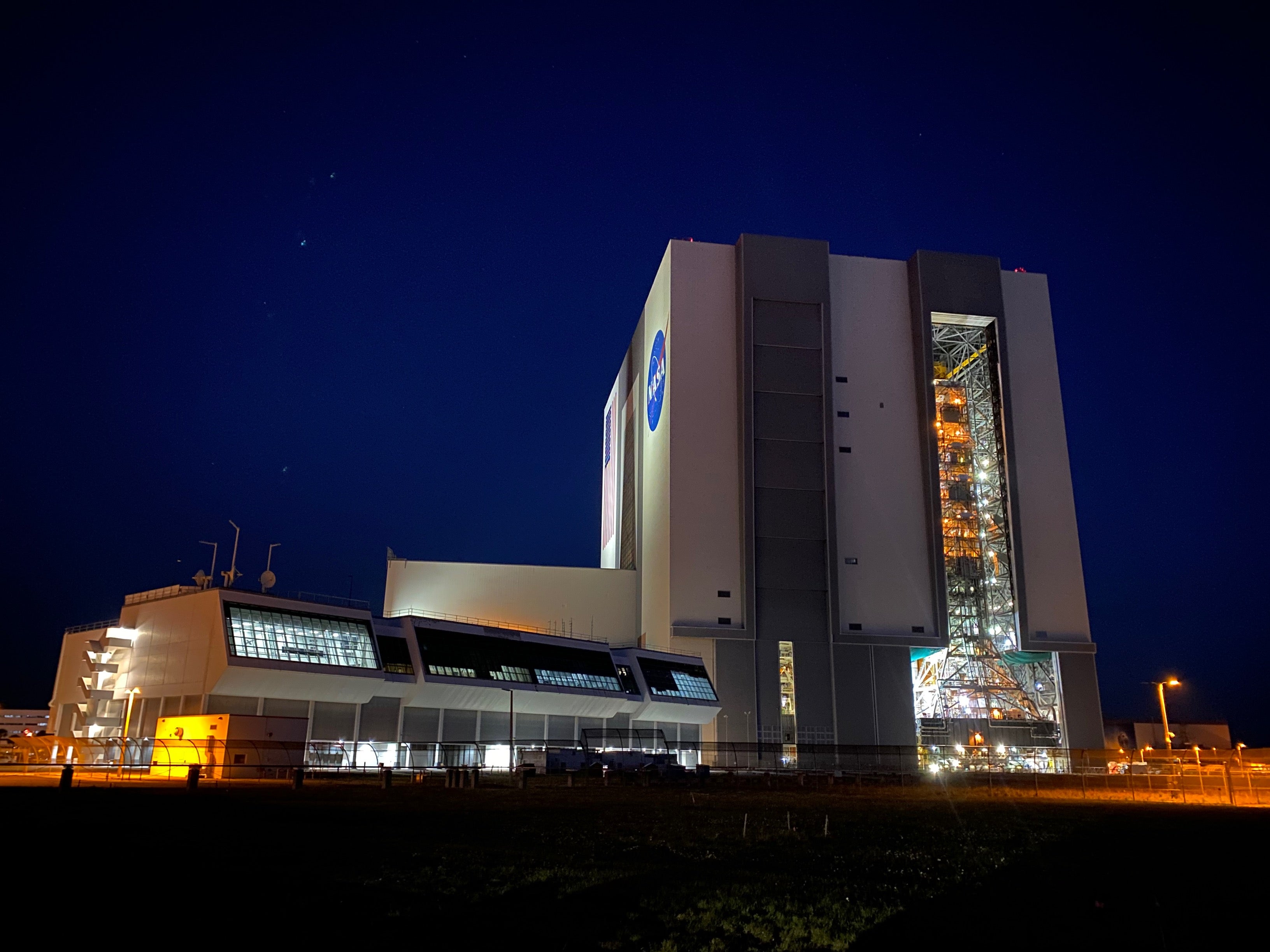Nasa Moon rocket test flight delayed amid repairs and test complications
Space agency pulled rocket back indoors for repairs, pushing test flight back until August or later

Your support helps us to tell the story
From reproductive rights to climate change to Big Tech, The Independent is on the ground when the story is developing. Whether it's investigating the financials of Elon Musk's pro-Trump PAC or producing our latest documentary, 'The A Word', which shines a light on the American women fighting for reproductive rights, we know how important it is to parse out the facts from the messaging.
At such a critical moment in US history, we need reporters on the ground. Your donation allows us to keep sending journalists to speak to both sides of the story.
The Independent is trusted by Americans across the entire political spectrum. And unlike many other quality news outlets, we choose not to lock Americans out of our reporting and analysis with paywalls. We believe quality journalism should be available to everyone, paid for by those who can afford it.
Your support makes all the difference.Nasa’s Moon rocket has had its test flight delayed until later this year after crews were forced to move it back into the Vehicle Assembly Building at Florida’s Kennedy Space Center for repairs.
The roughly 10-hour journey on Nasa’s massive, treaded crawler-transporter vehicle began just before 8pm on Monday and saw the rocket slip back inside the building around 6am the following morning.
The big rocket had sat on the launch pad since 17 March and undergone three attempts and important pre-flight testing, but issues discovered during the testing forced the space agency to pull the rocket back indoors for repairs.
While Nasa officials have insisted the problems are minor, and the type of problems the testing was designed to sniff out in a new rocket, Nasa assistant administrator Bob Cabana admitted in a Tuesday press briefing that the space agency is now hoping to launch an SLS test flight in August. At the time the SLS rolled to the launch pad in March to begin testing, Nasa officials were still discussing launch windows in May.
“The team is evaluating options,” Mr Cabana said. “Once we have a better technical understanding of where we are, we'll make the final decision on what the plan forward is and when we'll launch.”
Nasa tried three times to conduct a “wet dress rehearsal” for launch with the SLS at the launch pad, a test which consists of a simulated countdown and filling the rocket with cryogenic liquid oxygen and hydrogen propellant, the “wet” portion of the test.
The first attempt on 3 April was foiled by malfunctioning fans designed to manage hazardous gasses on the rocket’s mobile launcher platform, while the 4 April test was scrubbed halfway through when a pressure valve on the mobile launcher was found to be malfunctioning. Following the aborted 4 April test, Nasa technicians also discovered a faulty helium pressure valve on the rocket’s upper stage
Nasa tried for a third wet dress attempt on 14 April, this time modifying the test to avoid fueling the rocket’s upper stage. But the test was cut short again due to a liquid hydrogen leak in the connection fueling the rocket.
Nasa officials have pointed out that the helium valve on the SLS upper stage is the only problem found on the rocket itself, but all of the issues need to be resolved, and a full wet dress likely conducted, before the SLS can fly.
It’s not clear how long the work on the SLS itself may take, but Cabana said that preparations for the launch range itself could take two weeks following the launch of Nasa’s Crew-4 mission to the International Space Station from Kennedy Space Center on Wednesday morning.
“The important thing now is, we’ve got to do this right,” Cabana said. “It's a big rocket, a lot of new equipment, new systems on the ground side and on the flight side.”
The SLS rocket and Orion spacecraft it launches are the backbones of Nasa’s Artemis Moon program, which aims to return humans to the moon during the program’s third mission in 2025. Artemis-II, a crewed lunar flyby is scheduled for 2024.
But before humans take a ride on the SLS, Nasa must launch an uncrewed flight that will propel the Orion spacecraft to beyond the Moon and back, the Artemis I mission. Based on Cabana’s comments Tuesday, that test flight may still happen this summer — if barely.
“August,” he said, “there are options that do still get us there.”
Join our commenting forum
Join thought-provoking conversations, follow other Independent readers and see their replies
Comments